Mohammad A. Morid
Detecting mechanical loosening of total hip replacement implant from plain radiograph using deep convolutional neural network
Dec 02, 2019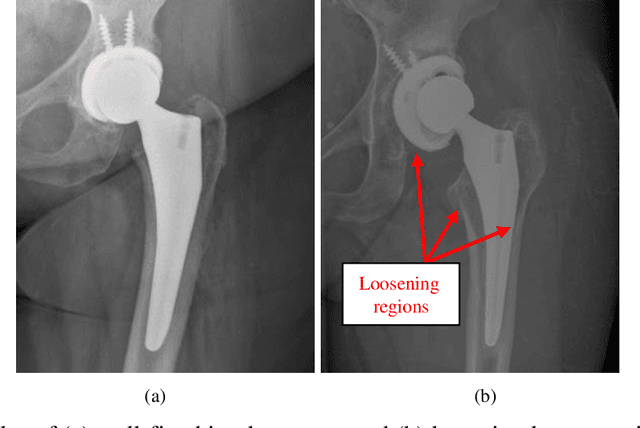
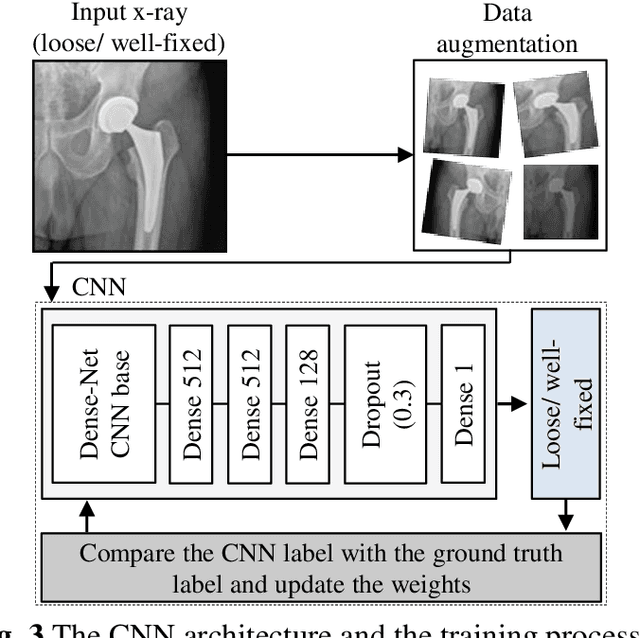
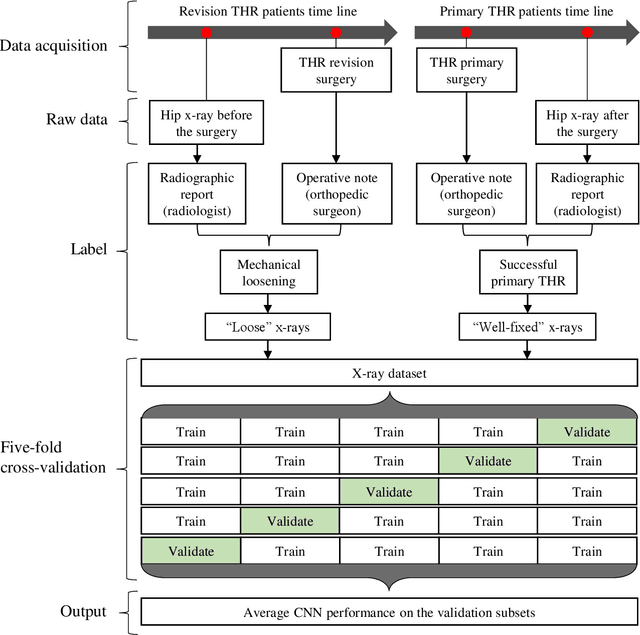
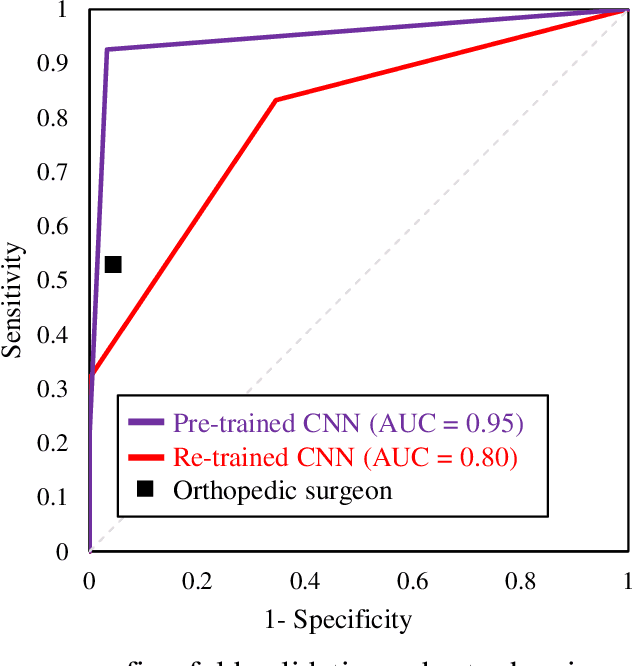
Abstract:Plain radiography is widely used to detect mechanical loosening of total hip replacement (THR) implants. Currently, radiographs are assessed manually by medical professionals, which may be prone to poor inter and intra observer reliability and low accuracy. Furthermore, manual detection of mechanical loosening of THR implants requires experienced clinicians who might not always be readily available, potentially resulting in delayed diagnosis. In this study, we present a novel, fully automatic and interpretable approach to detect mechanical loosening of THR implants from plain radiographs using deep convolutional neural network (CNN). We trained a CNN on 40 patients anteroposterior hip x rays using five fold cross validation and compared its performance with a high volume board certified orthopaedic surgeon (AFC). To increase the confidence in the machine outcome, we also implemented saliency maps to visualize where the CNN looked at to make a diagnosis. CNN outperformed the orthopaedic surgeon in diagnosing mechanical loosening of THR implants achieving significantly higher sensitively (0.94) than the orthopaedic surgeon (0.53) with the same specificity (0.96). The saliency maps showed that the CNN looked at clinically relevant features to make a diagnosis. Such CNNs can be used for automatic radiologic assessment of mechanical loosening of THR implants to supplement the practitioners decision making process, increasing their diagnostic accuracy, and freeing them to engage in more patient centric care.
Detecting total hip replacement prosthesis design on preoperative radiographs using deep convolutional neural network
Nov 27, 2019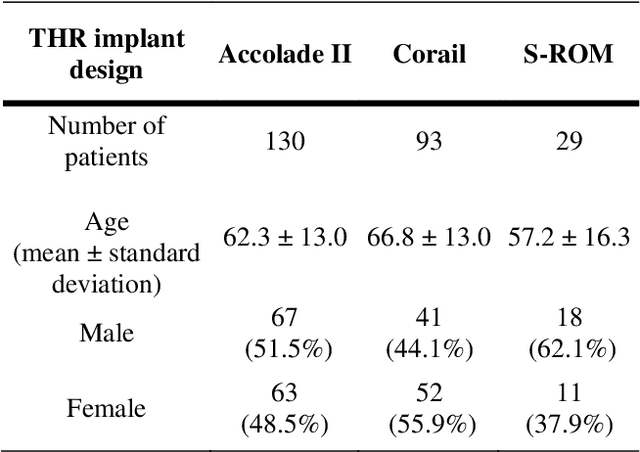
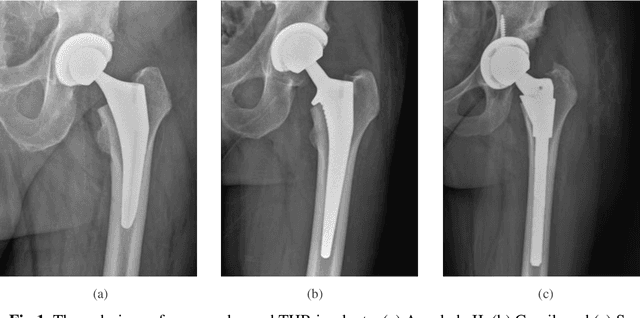
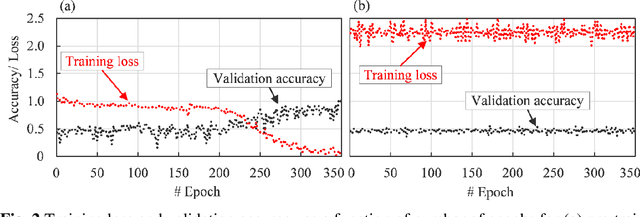
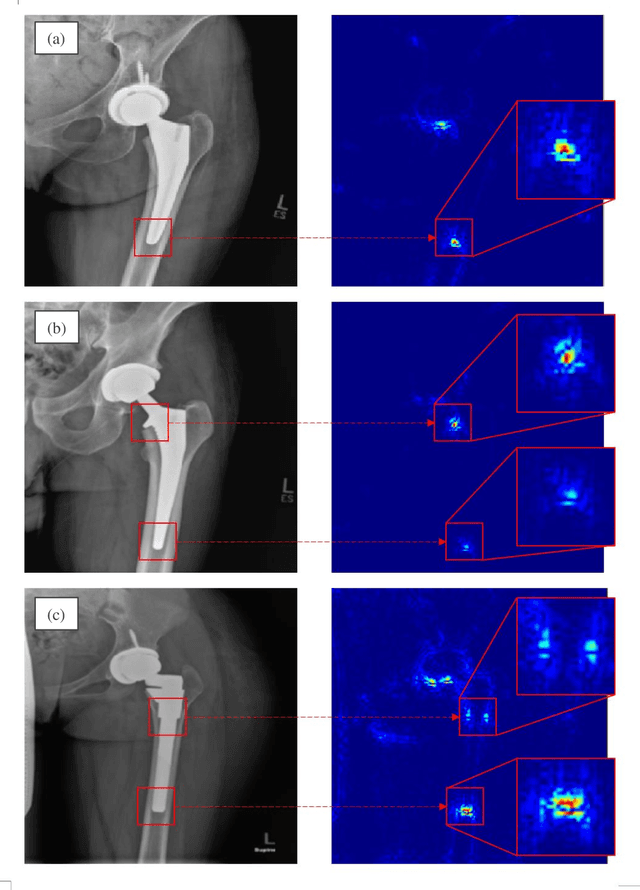
Abstract:Identifying the design of a failed implant is a key step in preoperative planning of revision total joint arthroplasty. Manual identification of the implant design from radiographic images is time consuming and prone to error. Failure to identify the implant design preoperatively can lead to increased operating room time, more complex surgery, increased blood loss, increased bone loss, increased recovery time, and overall increased healthcare costs. In this study, we present a novel, fully automatic and interpretable approach to identify the design of total hip replacement (THR) implants from plain radiographs using deep convolutional neural network (CNN). CNN achieved 100% accuracy in identification of three commonly used THR implant designs. Such CNN can be used to automatically identify the design of a failed THR implant preoperatively in just a few seconds, saving time and improving the identification accuracy. This can potentially improve patient outcomes, free practitioners time, and reduce healthcare costs.
 Add to Chrome
Add to Chrome Add to Firefox
Add to Firefox Add to Edge
Add to Edge